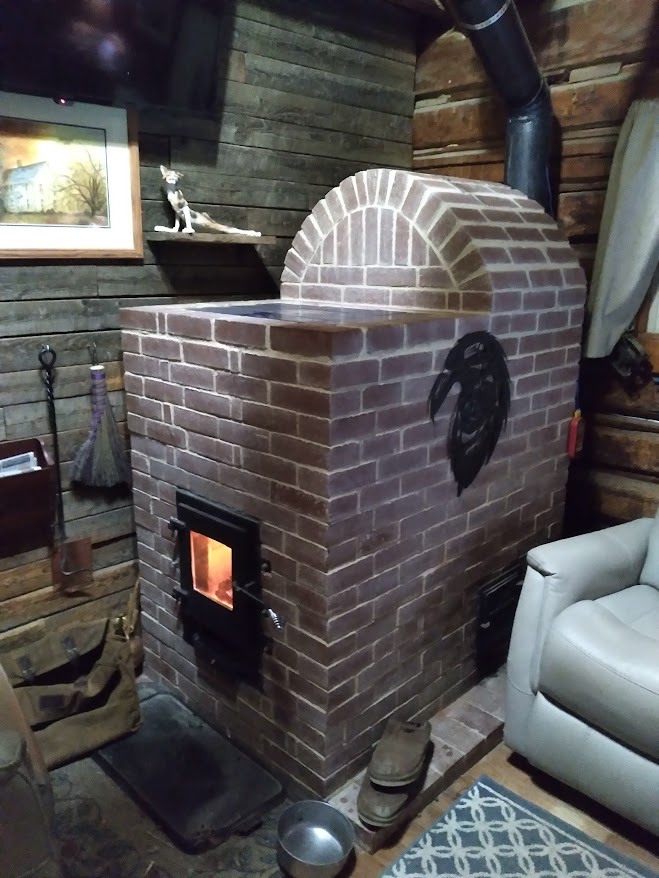
 5
5




 3
3




 3
3




Cristobal Cristo wrote:Clay bricks (so also firebricks) have much higher embodied energy than concrete.
 5
5





 7
7





For all your Montana Masonry Heater parts (also known as) Rocket Mass heater parts.
Visit me at
dragontechrmh.com Once you go brick you will never go back!
 6
6




Rocket surgeon and soil builder... healthy plants are all about the soil.
- My 6" Batch Rocket specs and materials list: https://permies.com/t/248275/Batch-Rocket-Double-Skin-Bell
- Batch Rocket detailed build thread with Q&A: https://permies.com/t/238503/Batch-Rocket-Build
 7
7




thomas rubino wrote:Hi Elizabeth;
I suggest a Batchbox-style Montana masonry heater (RMH)
Depending if you build a single skin or a double skin bell and what size core you use.
You are looking at a rough footprint of 4' x 5' with a weight of 2500# to 5000#.
Become extra-civilized!
 6
6




Glenn Littman wrote:Hi Elizabeth, Following on from Thomas' recommendation above to build a batch box RMH... for your floor/foundation I would suggest you pour a concrete pad perhaps 18" wider in all directions than the footprint of your RMH. Making the concrete at least 6" thick so that the concrete is your foundation. You'll need to determine the design of the pad depending on your soil conditions and elevation of the floor above grade so having some form of piers or small diameter Sonotubes that are deeper into the ground for stability may be required. I would then install some insulation around the perimeter of the slab below floor level as well as underneath. This is the principal that I used when building my house area that has in-floor hydronic heat. I hate styrofoam, but 2" thick construction grade sheets laid underneath and around the perimeter of the on-grade slab help significantly to retain heat in the slab. The slab will then become a part of the heated mass and provide you with a solid foundation from which to build the RMH.
I can tell you from the experience of my 6" BB-RMH system that is built on a 6" thick concrete floor in my shop area that does not have the insulated hydronic floor as noted above... the concrete 18" out from the perimeter of the RMH is roughly 18 deg F warmer than the rest of the floor in the shop. If you were to surround the concrete pad with insulation it will better retain the heat and likely run well more than 20 deg higher than the ambient air and become part of your thermal mass.
 6
6




thomas rubino wrote:Hi Elizabeth;
I suggest a Batchbox-style Montana masonry heater (RMH)
Depending if you build a single skin or a double skin bell and what size core you use.
You are looking at a rough footprint of 4' x 5' with a weight of 2500# to 5000#.
Not that much extra support would be needed; perhaps two extra soni tubes with a wood or metal cross-beam would be sufficient to beef up the floor joists.




 8
8




For all your Montana Masonry Heater parts (also known as) Rocket Mass heater parts.
Visit me at
dragontechrmh.com Once you go brick you will never go back!
 7
7




thomas rubino wrote:Hi Elizabeth;
Any style RMH may have trouble starting with a completely cold system.
I have had J-Tubes, First Generation Batchboxes, and a Walker riserless core, each has smoked back a time or two when cold.
I also recommend installing a bypass gate with all RMH builds to facilitate cold starts.




Invasive plants are Earth's way of insisting we notice her medicines. Stephen Herrod Buhner
Everyone learns what works by learning what doesn't work. Stephen Herrod Buhner

|
I didn't know this tiny ad could juggle
Rocket Mass Heater Resources Wiki
https://permies.com/w/rmh-resources
|







